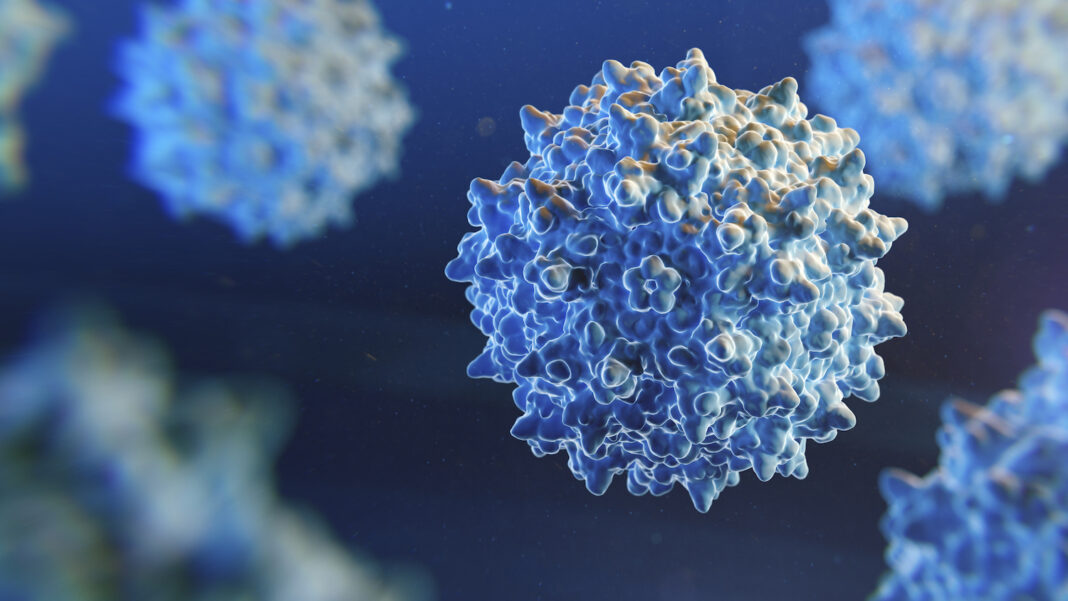University of Zurich scientists demonstrated that they could reassemble and express large genes using a new dual adeno-associated viral (AAV) vector technology that depends on mRNA trans-splicing. This technology, known as REVeRT (reconstitution via mRNA trans-splicing), enables versatile split site selection as well as the efficient reconstitution of various split genes, including prime editors and CRISPR activators (CRISPR) for genomic and epigenomic editing, respectively, in a variety of in vitro models, human organoids, and in vivo settings. REVeRT can also be given in a single or multiplexed dose to target genes in a wide range of mouse tissues and organs. The flexibility and efficiency of REVeRT make it a highly promising tool for both clinical and basic research applications.
The peer-reviewed research article, “mRNA trans-splicing dual AAV vectors for (epi)genome editing and gene therapy,” was published in Nature Communications.
Dual AAVs for large gene reconstitution
Large genes, such as CRISPR-Cas modules like gene activators (CRISPRa), require dual AAV vectors for efficient in vivo delivery and expression. The low efficiency of reconstitution, also called “DNA trans-splicing,” is a major drawback of current dual AAV vector approaches.
To overcome this limitation, several methods have been developed, all of which use the same basic idea: the gene of interest is divided into two parts and packaged into separate AAV vectors, known as dual AAVs. After the two AAVs are delivered to the target tissue at the same time, the split gene parts can be reassembled at the AAV genome, mRNA, or protein levels.
The various versions of AAV-level gene reconstitution rely on AAV genome homologous recombination or concatemerization. However, DNA trans-splicing at the AAV level frequently results in low to moderate reconstitution efficiency. The method that uses split inteins—self-splicing sequences of amino acids—works at the protein level and usually has very high reconstitution efficiencies. However, the split intein method is not very flexible and yields equal amounts of immunogenic or pathogenic inteins, raising serious safety concerns for translational approaches.
Little attention has been paid to AAV reconstitution via dual mRNA trans-splicing. In DNA trans-splicing, the mRNA splicing happens in cis and gets rid of the non-coding parts between the split fragments after the genome has been successfully put back together. While some sequence elements used in mRNA trans-splicing are the same as those used in DNA trans-splicing, such as complementary domains and splice sites, reconstitution occurs between two different mRNA molecules.
Until now, mRNA trans-splicing and AAVs have only been used once in cell culture experiments to express the CFTR gene. Despite this, it has not been thoroughly tested for safety or effectiveness, and it has yet to be used effectively in living organisms, disease models, or gene editing methods.
Large gene reconstitution with mRNA trans-splicing
Lisa Maria Riemayer, PhD, and colleagues from Elvir Becirovic’s lab made REVeRT, a dual AAV vector technology that is flexible and effective. It is based on mRNA trans-splicing. They show that REVeRT can be used in vivo to restore the functionality of CRISPR activator (CRISPRa) and prime editors, as well as to add disease-related genes that are larger than what individual AAVs can carry, in various tissues. For example, Cas9-VPR29, one of the most powerful CRISPRa modules, is too large to fit into a single AAV vector. REVeRT can functionally reconstitute full-length Cas9-VPR in a variety of therapeutically relevant tissues and organs (including the retina, heart, lung, liver, skeletal muscle, and brain), as well as via various application routes.
Using dual REVeRT AAVs, Reidmayr and her colleagues also showed an in vivo multiplexing method for turning off and activating genes simultaneously. Combining sgRNAs with different spacer lengths targeting the respective loci allows for concurrent knockout and activation (CONNACT) of multiple genes. CONNACT can treat gain-of-function mutations, which require the effective knockdown of the faulty allele and the insertion of an additional gene to compensate for the lost function.
Furthermore, the CONNACT strategy could serve as a platform for treating other disorders involving multiple genes or pathways, such as cancer or neurodegenerative diseases. Using REVeRT along with CONNACT could be used to turn on tumor suppressor genes and turn off oncogenic genes at the same time, or to turn off proapoptotic or cell-damaging genes and turn on neuroprotective genes at the same time.
Researchers from the University of Zurich have finally shown that REVeRT works well after intravitreal injections when used with regular gene supplementation to treat a genetic disease that causes blindness and is usually caused by changes in the large ABCA4 gene. Using the dual REVeRT vector technology in a small cohort of mice, they have obtained preliminary experimental data suggesting improvements in retinal degeneration and function in a Stargardt mouse model. However, a larger cohort of animals and additional functional measurements are required to fully evaluate the therapeutic effect of this technology for Stargardt gene therapy.
Because REVeRT works well in many tissues or organs even after being given intraperitoneally, it may make it easier to treat people with a certain disease, for example if local administration routes do not work or if more than one organ needs to be transduced at the same time. Nevertheless, although REVeRT yields highly promising results in efficacy, further safety parameters such as tolerability, toxicity, or immunoreactivity need to be investigated in non-human primates before it can be used in clinical trials.


